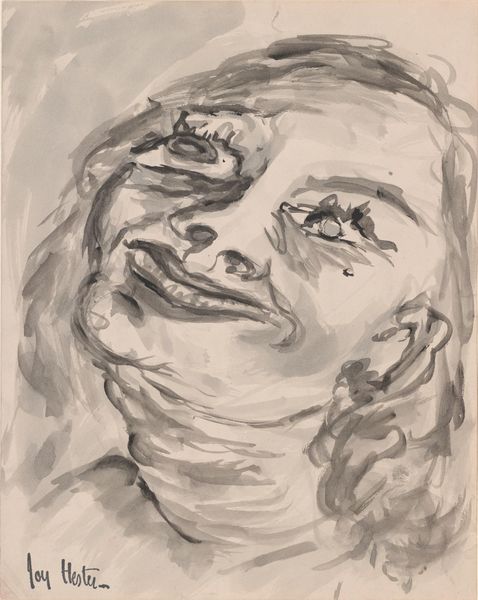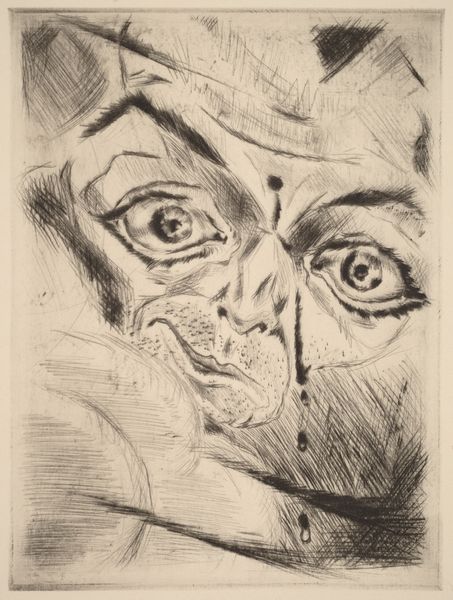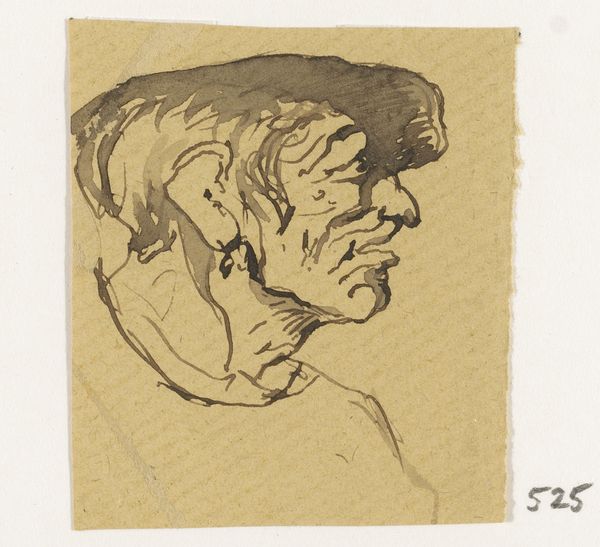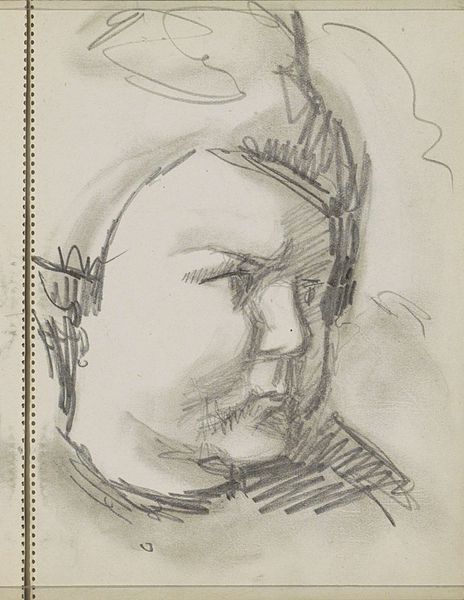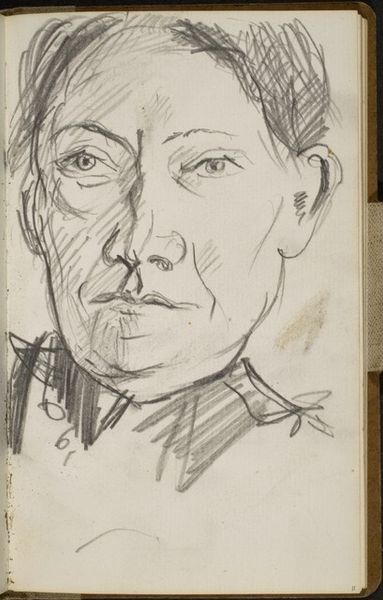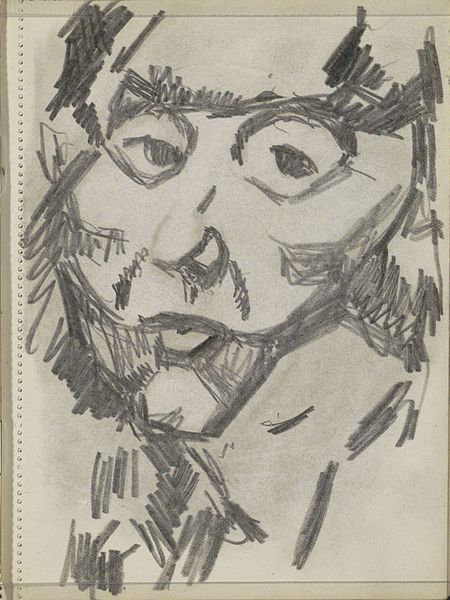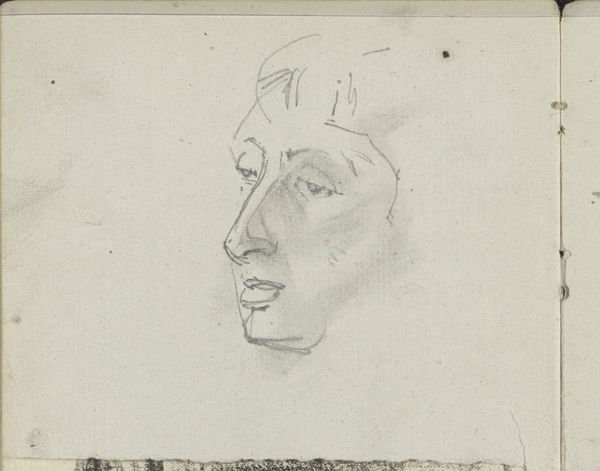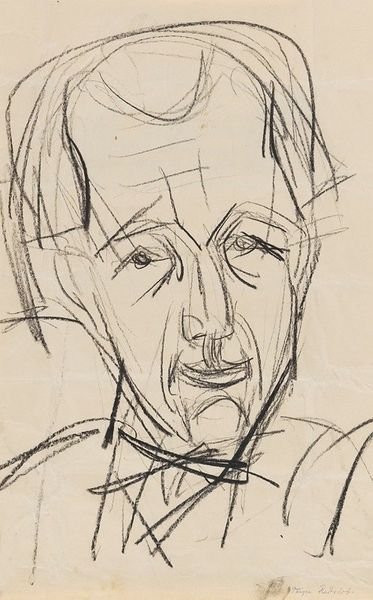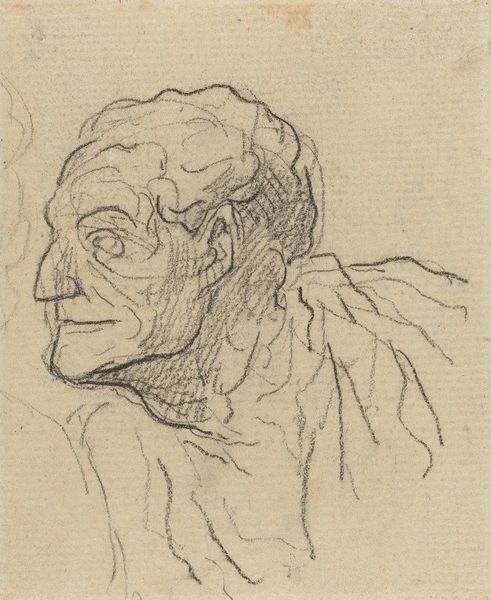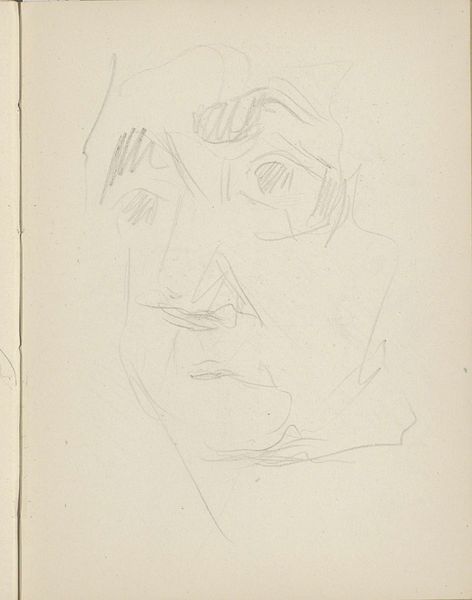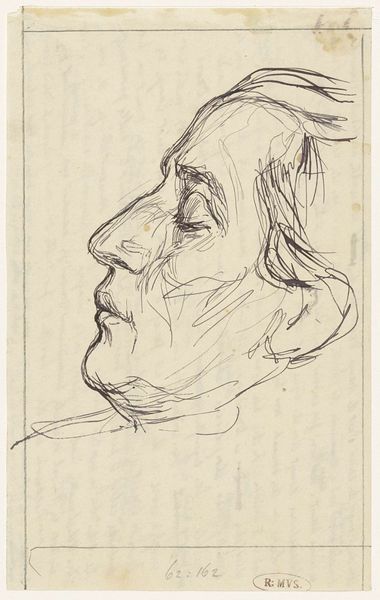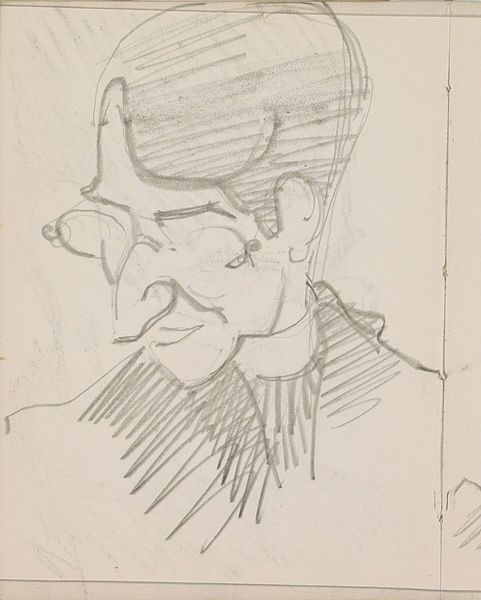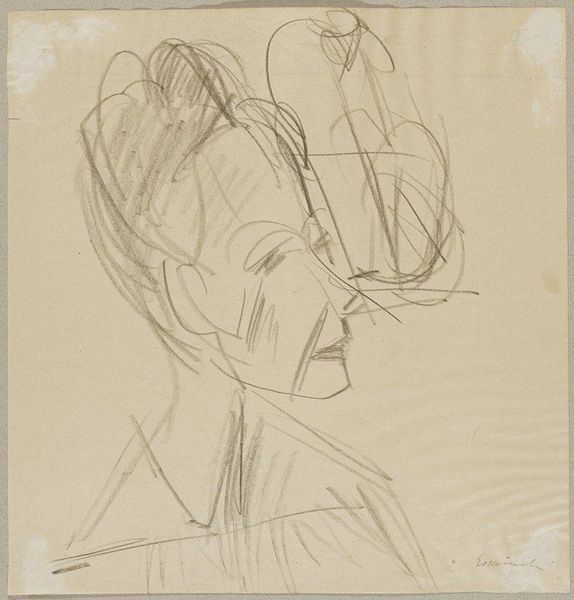
Dimensions: 31.7 x 25.2 cm
Copyright: Joy Hester,Fair Use
Editor: Here we have Joy Hester's 1948 drawing, Rostro, done with ink and wash. It’s currently housed at the National Gallery of Victoria. There’s something quite haunting about this portrait – an unsettling directness. How do you interpret this work? Curator: I see Rostro as a powerful exploration of masculine identity within the context of post-war Australia. Consider the societal pressures and anxieties surrounding men returning from war – expectations of stoicism clashed with the raw realities they faced. Does this resonate with the way you see the figure depicted? Editor: Definitely, there's a vulnerability present despite the strong lines. That almost accusatory stare also carries a weight of trauma, perhaps? Curator: Precisely. Hester was deeply interested in psychoanalysis. Think about how traditional portraiture often idealizes its subject. Here, Hester seems to strip away those layers, revealing something more primal. It could even be read as a critique of hegemonic masculinity itself. What kind of statement could she be making by subverting such artistic traditions? Editor: It’s like she's deliberately choosing not to flatter her subject. The exaggeration of features almost renders it a caricature, forcing the viewer to confront something unpleasant. It challenges that stoic ideal. Curator: Exactly! And how does the choice of materials contribute? The raw quality of ink and wash... Editor: ...creates an immediacy, as if capturing a fleeting emotion. It’s less about permanence and more about the ephemeral nature of the human experience. Thank you so much for your insightful commentary! I feel as if I now understand the picture in much broader terms. Curator: It was my pleasure. Understanding the cultural and social background makes engaging with art much more significant and allows us to see and consider other perspectives.
Comments
No comments
Be the first to comment and join the conversation on the ultimate creative platform.
